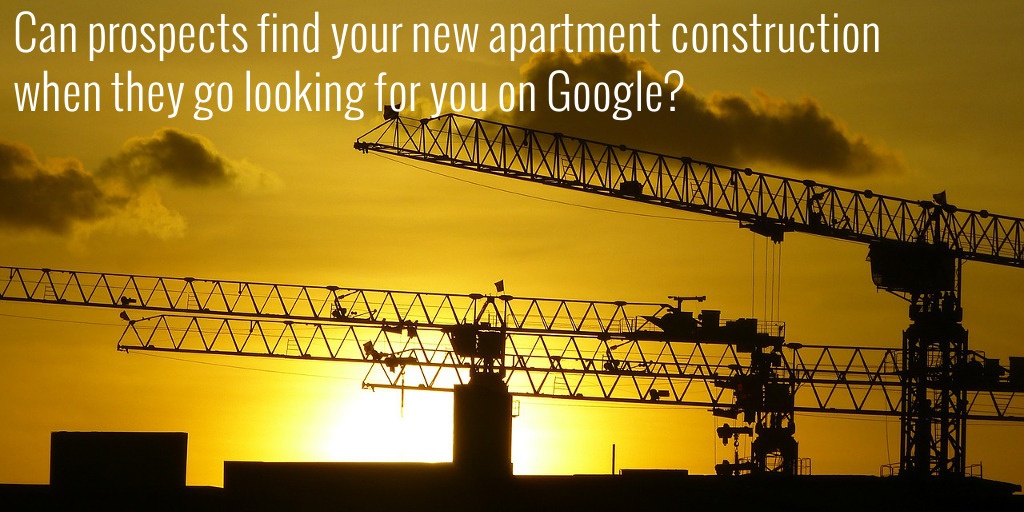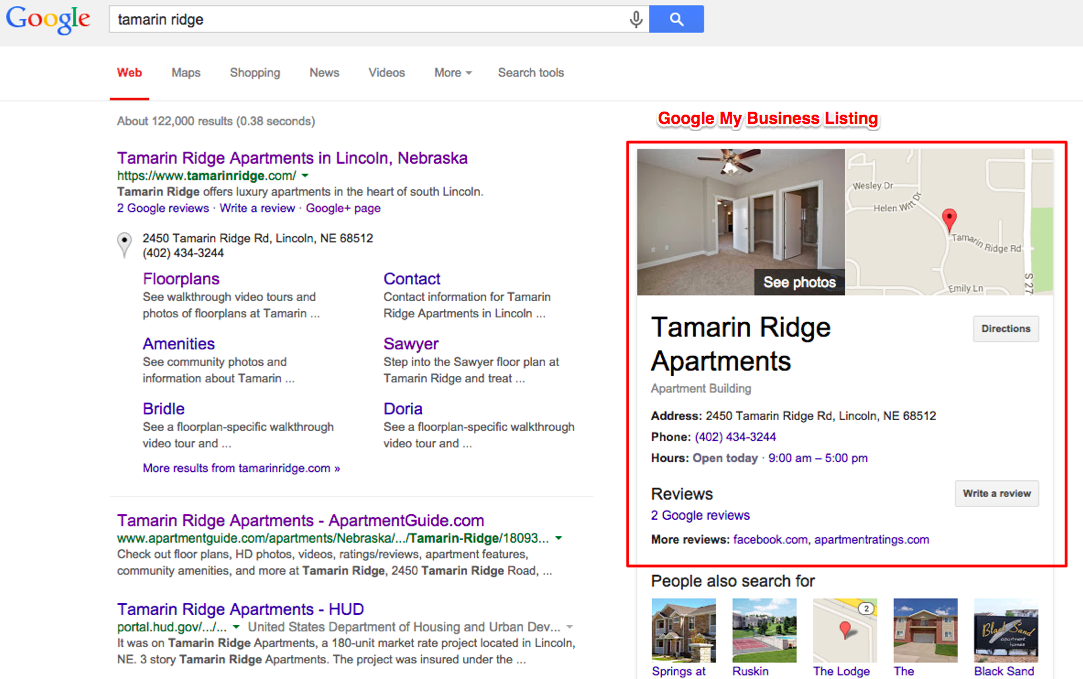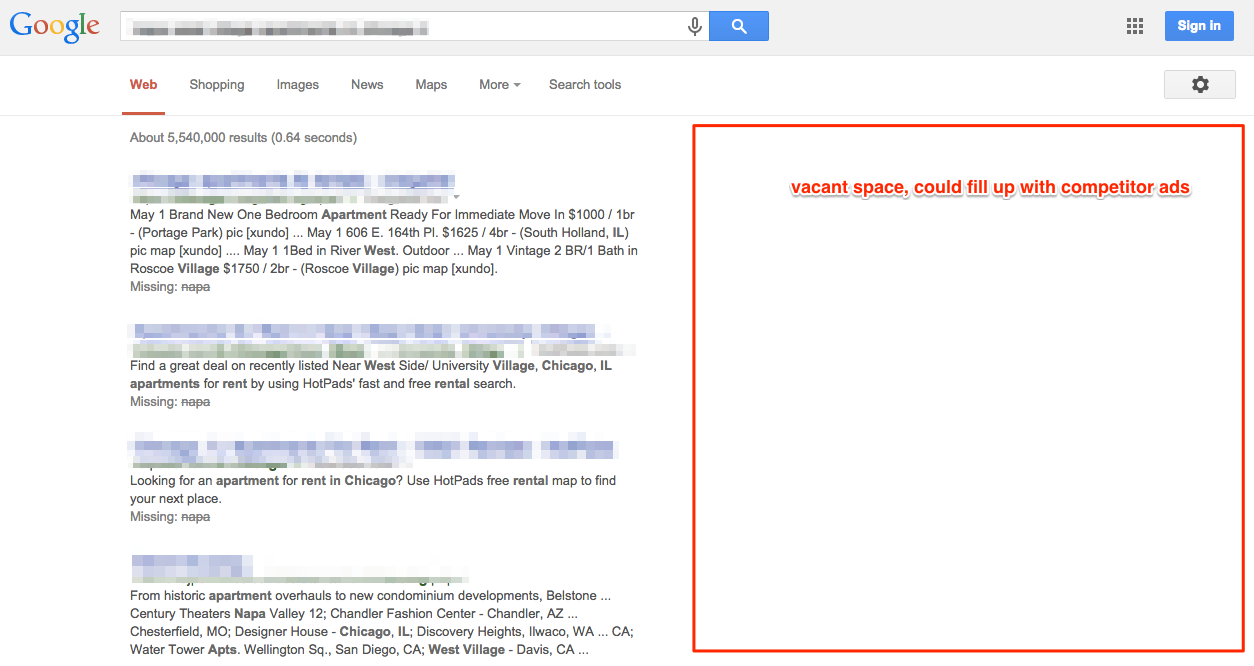Multifamily Blogs
7 Keys to an Apartment Lease Up Marketing Plan
7 Keys to an Apartment Lease Up Marketing Plan

According to the Commerce Department, construction of new apartment units hit an annual pace of 423,000 last summer. That's a ton of new lease ups, all of which have unique marketing challenges as their owners attempt to fill them with new, paying residents.
If you're a property owner, marketing director, or property manager for one of these new properties, you know how hard that can be. You're trying to compete with older, better established communities that are already well known and have an established presence in your area. The fact that you're new should work in your favor, of course, but that only helps you if people know about you. You need a marketing strategy that will get the word out about your property and help you get in front of the right people.
In this post we want to talk through seven keys to developing an apartment lease up marketing plan for the many new communities opening up in the coming years.
Set up a website as soon as possible.
This is the most important point. When you're a new community you naturally create a bit of buzz. People walk past and see the construction happening. Local businesses are aware of you. Depending on the situation, you may even get mentioned in local media--if you're a new luxury community in a certain part of town or are opening near a major university or growing neighborhood, for example.
People who hear about you from one of those sources and want to know more will generally get online and do a Google search to see if they can learn more about you--when you open, rent rates, amenities, etc. If your only web presence is on the corporate site or on an ILS that will make your community harder to find and provide a poorer experience for people as the information they want will probably be harder to find than it would be on a community page. Additionally, on an ILS they will also be finding your competitors alongside your own listing.
You want to make sure that when they search for you, they find you. And if they find you on a community-specific website that answers all the questions they have about your new community--price, amenities, availability, etc then all the better.
Set up your local business listings, particularly Google My Business.
It actually isn't that hard to get people's attention. Between the natural curiosity inspired by new traffic as well as normal drive-by traffic, it won't be hard for people to find out that your community exists, particularly if you make sure there are prominent, easy-to-read banners around the site of the new construction advertising the community's name.
What is more difficult is finding reliable information about the community online. Many communities do not set up their local business listings correctly, particularly Google My Business. But if you want users to find you, particularly when they search for you by name, Google My Business is essential.
If someone searches for you by name and your Google My Business listing is set up correctly, they'll see this:

If you don't have it set up right, they'll see something more like this:

So one of the most important things you can do right off the bat is to make sure your community's local business listing and especially its Google My Business listing is online and accurate as soon as possible. You won't be able to do this until you are receiving my mail at the location and are open for business as Google sends a postcard to the business address to confirm the listing's accuracy. But once you can receive mail at the location and are open, you must act immediately to get the listing online.
Get photo and video of the apartment online as soon as possible.
We said earlier that you need to get your community website up and launched so that prospects can find you. But the reason they want to find you is so they can learn about your community. So simply getting a community website with stock photos and lots of text online won't help you that much. You need a community website with the closest thing you can get to photos and video tours of each floorplan. That visual content will help prospects to see what your community actually looks like.
Obviously if your community isn't open yet you can't shoot actual video tours or photos of the completed floorplan. That said, there are ways of creating computer-generated videos that look like what the floorplans will look like when completed. So if possible, you should get computer-generated graphics up as placeholders until you can get real photos and videos of the completed floorplans.
Set up defensive PPC campaigns.
This point relates to what we said above about setting up local business listings so that it is easy for prospects to find you specifically. When someone searches for you by name, you want them to find you. This is why you need to have AdWords campaigns set up to defend your branded keywords--which are any search terms that include your community's specific name.
In fact, setting up defensive campaigns is one of the best ways to insure that searchers do end up on your site, as this research from SEER Interactive demonstrates.
If you set up defensive ads on a SERP where you also have a local business listing and the top organic result, then the odds of the searcher ending up on your site or calling your office are very high indeed.
Post on Craigslist.
Because Craigslist has such a huge userbase it is one of the best ways to get traffic quickly. That said, you have to be careful with this because of Craigslist's strict posting guidelines. You cannot post similar content more than once every two days. If you have visual content for each floorplan and can write in some detail about each one in your marketing comments, then you can post each floorplan once every 48 hours.
However, if you do not yet have any visual content and no way of making each floorplan post unique, you'd be better off posting only one post total every 48 hours. You could try to make each post for each floorplan fairly different, but without photos it's really difficult to do that and you'd run the risk of being ghosted. For that reason, it's best to play it safe, only post once every 48 hours, and benefit from the traffic that comes in, even with that limited posting schedule.
Set up tracking numbers for all marketing sources.
It's essential from the start that you establish the habit at your community of tracking your marketing sources, monitoring their performance, and making appropriate corrections. So you want to get into the routine early on of setting up tracking numbers and watching to see how each marketing source you use performs.
This obviously isn't something unique to new constructions. Every community should be doing this. But it will be easier to make this happen if you establish the habit early rather than trying to start once the community is up and running.
Set up Google Analytics on your community website.
The other piece to tracking your marketing is tracking your web traffic. Though not as direct a measure of a source's success as the tracking numbers, analytics can be helpful in giving you a sense of how people are using your particular website. Analytics can tell you a number of things:
- Where is your traffic coming from?
- What pages are they looking at?
- How long are they on your site?
- Are people coming back to your site after their first visit?
If you can know all of those things, then you can better know how to use your website and how to improve its performance. With analytics you are bringing in web usage data to complement the tracking numbers, all of which adds up to a fairly comprehensive picture of how prospective residents are finding your community and using your online marketing materials.
Conclusion
Filling a new apartment building isn't easy. You don't have the history that older communities do and building up a reputation within your city is difficult. That said, if you do the seven things described above you can take advantage of the things you do have in your favor and fill up your community quicker than you anticipated. If you have any questions, please ask them in the comments below.

